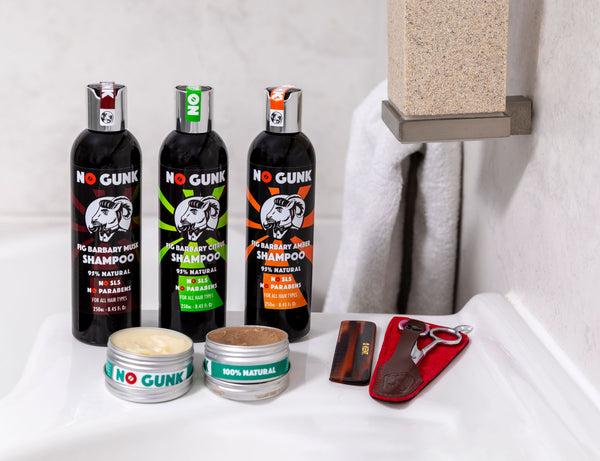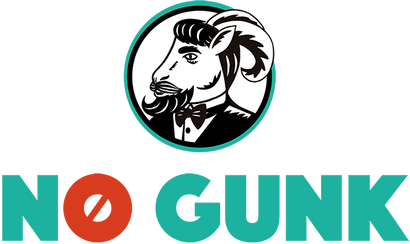
How To Get Rid Of Scalp Acne?
How To Get Rid Of Scalp Acne?
Scalp acne is a lot less common than other types of acne on the body. However, this doesn’t make it any less troublesome. Scalp acne is usually caused by clogged pores or pimples on the scalp which forms scalp acne. The best way to combat this is by keeping the hair and scalp clean, using quality products or, in more extreme conditions, using medicated shampoos.
What is scalp acne?
Scalp acne is a term used when pimples and breakouts develop on the scalp or in the hairline. It is often itchy and unformattable and can feel like small bumps throughout your hair. Scalp acne often develops when hair follicles are clogged due to a buildup of dead skin cells and excess sebum. Sebum is an oily, waxy substance produced by your body’s sebaceous glands. In other words, your body’s natural oils. The pores on your scalp can also become clogged if you do not wash your hair frequently, or regularly wear headgear or hats that cause friction against the scalp.
The ADD, otherwise known as the American Academy of Dermatology, explains that scalp acne can also be caused by use of heavy chemical-based products, such as shampoos, conditioners, hairsprays or hair gels, which irritate and block your pores. When a breakout occurs because of your hair products coming into contact with hair or skin it is referred to as acne cosmetica.
A handful of other reasons you may be experiencing scalp acne is because of inflammation. This could be caused by fungus, mites, staphylococcus epidermidis, or Propionibacterium acnes.

What causes scalp acne?
Scalp acne often can look different for everyone as its appearance is not always the same. Sometimes it can look like pimples on the scalp, specifically around the back of the head and may feel itchy and sore. Other times, you can develop pimples or zits along your hairline or have painful bumps or cysts under the skin.
The most common reasons for having a flare up of scalp acne:
- Hair follicles are clogged with either dead skin cells or excess sebum.
- A build up of products, such as hair spray or hair gel, has mounted up on the scalp
- Chemicals in hair products have reacted badly with your skin and caused a bad reaction
- Not washing hair thoroughly or properly
- Waiting too long after a workout to wash dirty and sweaty hair
- Sweating while wearing a head covering or hat, especially if it is causing friction
Diet can also be linked to acne. A study published in 2016 suggests that a diet high in sugary carbohydrates may increase the risk of acne.
What are the symptoms of scalp acne?
The ADD explains that people who are suffering from scalp acne will notice either:
- Tiny bumps along the hairline, on the forehead, or at the back of the neck
- Whiteheads on the scalp or hairline
- Closely packed bumps throughout the hair
- Bumps on the scalp that are painful and sore
In a lot of cases people feel their scalp acne before they see it. You can run your fingers through your hair and feel for any bumps or lesions on your scalp. Once located you can use a mirror or your phone to check if it is scalp acne.

What topical treatments are there for scalp acne?
Sometimes when acne is very aggravated it is best to source a topical treatment. The good news is you don’t need a doctor's note to get your hands on these treatments as a lot of them are sold over the counter at your local pharmacy.
The usual key ingredients in these topical treatments are:
- Glycolic acid: An acid that helps to exfoliate the scalp and remove dead skin cells, bacteria, and excess sebum.
- Salicylic acid: This is the most common ingredient used in skin care products that are manufactured specially to fight acne. Salicylic acid helps to remove dead skin cells by breaking down the bonds between them.
- Ketoconazole: Which is an antifungal agent that is used to treat red or scaly skin.
- Ciclopirox: Is another antifungal agent but is used to treat infections and is often a key ingredient in anti-dandruff shampoos.
- Benzoyl peroxide: This is an antibacterial agent that helps to eliminate the bacteria Propionibacterium acnes
If you find that your over-the-counter treatments aren’t helping then it may be time to book an appointment with your GP to get something a little stronger that could work for you.
To find more information about skin acids and how they are beneficial to your skin check out our article on The Differences Between AHA & BHA.

What natural treatments can you use to prevent scalp acne?
Sometimes it’s just a few small changes in your routine that can get rid of scalp acne. Not everyone wants to head to their GP or pharmacy and have to dump a bottle of topical on their hair. These are a few natural and easy ways you can get rid of your scalp acne.
Find the right styling product:
Using the right styling product is very important when it comes to lowering your chances of getting hair acne. You need to use products filled with natural ingredients and contain no irritating or drying ingredients such as SLS or parabens. By using nourishing styling products such as NO GUNK’s Matte Lava Clay, Styling Funk, or Funky Flex Cream you are promoting good scalp health. These products are lightweight and assured to leave no gunk or residue behind in your hair! This means there will be no clogging of pores, no build up of product left on the scalp and no plugging of hair follicles. These are the perfect products to keep that scalp acne at bay.
Using an all-natural shampoo without SLS or sulphates:
Swap out your usual shampoo and invest in an all-natural, chemical free shampoo just like the Fig Barbary Shampoo. By using shampoo that is SLS-free you are protecting your scalp from harsh and drying chemicals that can aggravate your skin. Aim for shampoos that also include ingredients such as aloe vera which is the best ingredient when it comes to treating all types of acne. This is due to its healing and antibacterial properties. Aloe vera relieves skin from inflammation and irritation and works for all skin types from normal, dry, oily, combination and specifically sensitive skin types.
Using your all-natural shampoo correctly:
After investing in your all-natural, chemical free shampoo it is important that you know how to use it correctly. Instead of applying it throughout your hair, focus on applying your shampoo on your scalp. Massage the product in until it starts to foam and work it throughout your scalp. This allows you to remove all grime and build up as well as helping to improve circulation throughout your head which helps to minimise scalp acne. To get the best result from your Fig Barbary Shampoo make sure to leave it in your hair for 2-3 minutes before rinsing. When rinsing let the water naturally wash the shampoo off your hair without rubbing it in until your hair is clear.
Apply coconut oil to the affected area:
Coconut oil is a great ingredient for getting rid of scalp acne as it is rich in anti-inflammatory and antimicrobial properties. Make sure your coconut oil is soft (but not fully melted) and apply it to the affected area on your scalp. You can either leave it on for an hour before jumping in the shower to rinse thoroughly or leave it on overnight and rinse thoroughly in the morning. If you are going to leave the coconut oil in your hair overnight then it is advised to wrap your hair in a towel or put a towel on your pillow, so the coconut oil doesn’t transfer.
Apply tea tree oil to the affected area:
In the same way you can apply raw coconut oil to your scalp acne you can do the same with tea tree oil. Tea tree oil is also rich in anti-inflammatory and antimicrobial properties which helps your scalp destroy the microbes responsible for the acne. You can either apply the tea tree oil straight to the scalp or mix 6-7 drops in with a conditioner and then massage that into the scalp. After leaving it in your hair for a while you can then rinse it off thoroughly. For the best success with this method repeat three times a week.







Zheelana Cottam
Autor